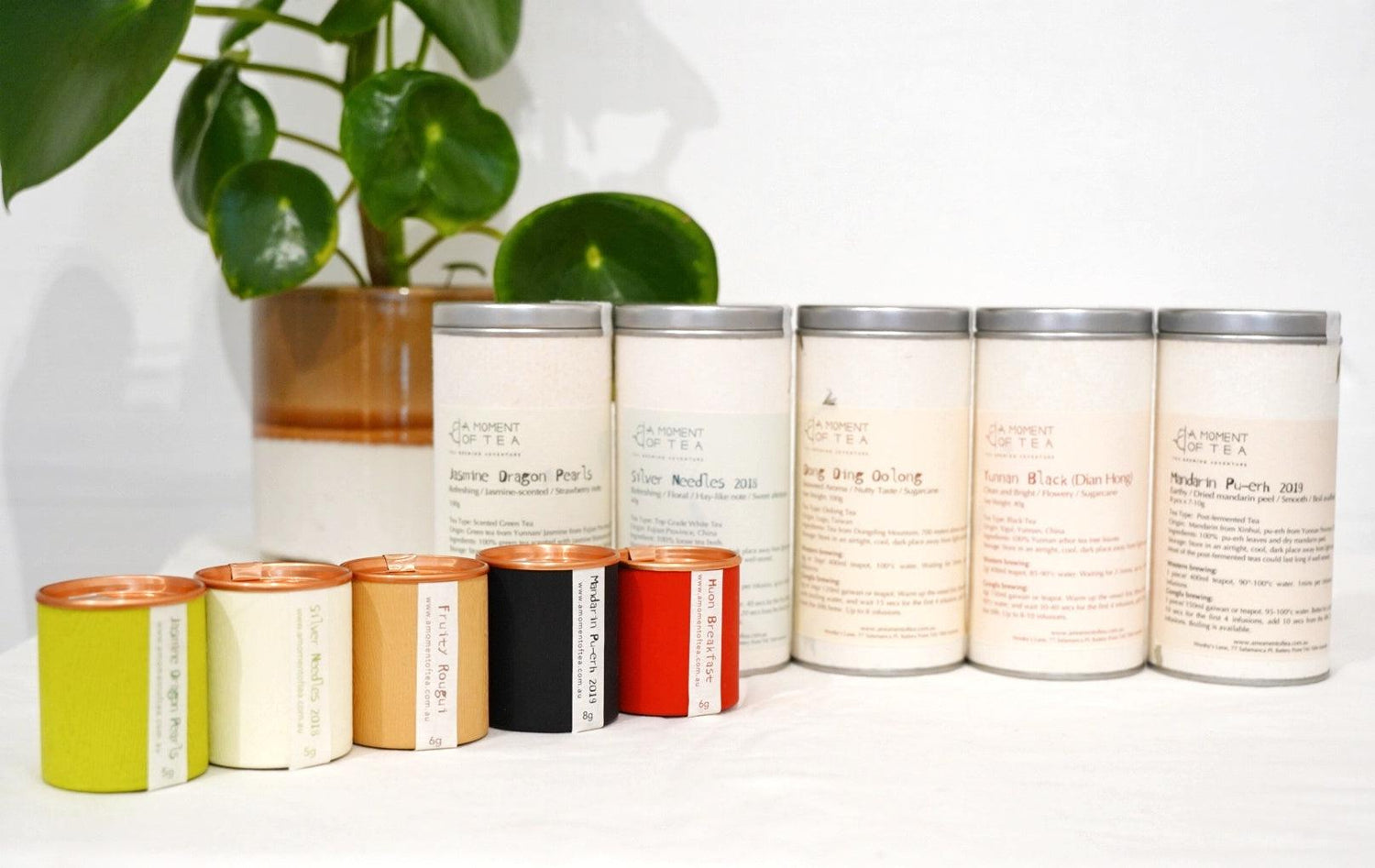Introduction to Tea: History, Types, and Cultures
IntroductionHello! It’s Joanne here, the founder of A Moment of Tea, and I'm thrilled to embark on this tea journey with you from the very beginning of our blog series!
Tea, a seemingly simple beverage, has a richness and depth that's captivated me ever since that afternoon in a Beijing teahouse back in 2014. Since then, my tea journey has taken me from being an intrigued tea drinker to a dedicated student, and now, a tea bar owner with a mission to share the joy of tea with others. Today, I invite you to join me as we explore the fascinating world of tea, its history, the different types, and the various cultures that have shaped and been shaped by it.

A Brief History of Tea
Legend which is believed by most of people has it that tea was discovered by Emperor Shen Nong in ancient China around 4700 years ago when a few tea leaves accidentally blew into his pot of boiling water. The resulting infusion was aromatic, refreshing, and seemed to have invigorating properties. This marked the beginning of the world's love affair with tea.
Over centuries, tea traveled across the globe, reaching different lands and cultures. From the Silk Road, an ancient network of trade routes, tea found its way to the Middle East and Russia. Sea routes later brought this beloved beverage to Europe, and British colonialism subsequently introduced it to India and other parts of the world.
Historically, tea played a pivotal role in numerous events. For instance, the Boston Tea Party, where American colonists protested British taxation by dumping chests of tea into the harbor, was a significant event leading to the American Revolution.
Understanding Tea Types
Tea, as we know it, comes from the Camellia sinensis plant. It's this single plant that gives us all types of true tea—green, white, yellow, oolong, black, and dark (post-fermented). The differences in aroma, color, and taste between these types result from variations in how the leaves are processed after harvesting.
- Green Tea: Green tea is non-oxidized, this involves heating the leaves shortly after harvest to prevent oxidation, preserving the green color and fresh, grassy flavor.
- White Tea: The least processed of all teas. It involves plucking the youngest leaves and buds, which are then allowed to wither under the natural sun before drying. This results in a delicate, light flavor often described as floral and sweet.
- Yellow Tea: A rare and expensive variety, similar to green tea but with a slightly longer oxidation process. This gives it a characteristic yellow color and a mellower, richer taste.
- Oolong Tea: Oolong is semi-oxidized, meaning it falls between green and black tea in terms of taste and color. It has a wide flavor spectrum, from light and floral to dark and roasty, depending on the degree of oxidation.
- Black Tea: Fully oxidized, black tea has a dark color and a robust, bold flavor. It's the most consumed type of tea worldwide.
- Dark Tea (Post-Fermented Tea): This category includes teas like Pu-erh, which undergo a unique process of microbial fermentation and aging. They have complex flavors that change and improve over time.

In addition to these true teas, there are also herbal teas or tisanes. Despite their name, these are not technically teas as they don't come from the Camellia sinensis plant. Tisanes can be made from a variety of plants, herbs, flowers, fruits, and spices, and have diverse flavors and potential health benefits.
Cultures Around Tea
Tea has profoundly impacted cultures around the globe. In China, the art of tea preparation and enjoyment is elevated to a ceremonial level with Gongfu teaceremonies. The Japanese have Chanoyu, the Way of Tea, a ritual serving of matcha, deeply rooted in Zen philosophy. In Britain, the afternoon tea tradition is a cherished practice, an epitome of elegance and socializing over tea sandwiches, scones, and of course, tea.

Each of these cultures also has a rich tradition of herbal teas. In many societies, herbal infusions have been used for centuries for their potential medicinal properties. For instance, in Egypt, chamomile tea is a popular drink enjoyed for its calming effects. In South Africa, rooibos or red bush tea is consumed as a caffeine-free alternative to tea, often with milk and sugar.
Conclusion
From its accidental discovery to its integral role in the world's cultures, tea has traversed a long and intriguing journey. It's not just a beverage; it's a symbol of hospitality, a medium for artistic expression, a catalyst for social interaction, and a pathway to mindfulness and tranquility.
At A Moment of Tea, we celebrate this global love for tea and its unifying power. As we delve deeper into the world of tea in the upcoming blog series, we really encourage you to explore your own tea journey, discover new flavors, rituals, and experiences, and find your unique moment of tea.
Join the Conversation
I hope you found this introduction to tea enlightening. Do you have any personal tea stories or rituals you would like to share? Any questions or areas of interest you would like to see covered in future blog posts? Please feel free to share in the comments below.
Stay tuned for our next blog post where we'll be diving into the art of brewing tea - ensuring you get the most out of every precious leaf.
Thank you for being a part of this journey and remember, there's always time for "A Moment of Tea".



